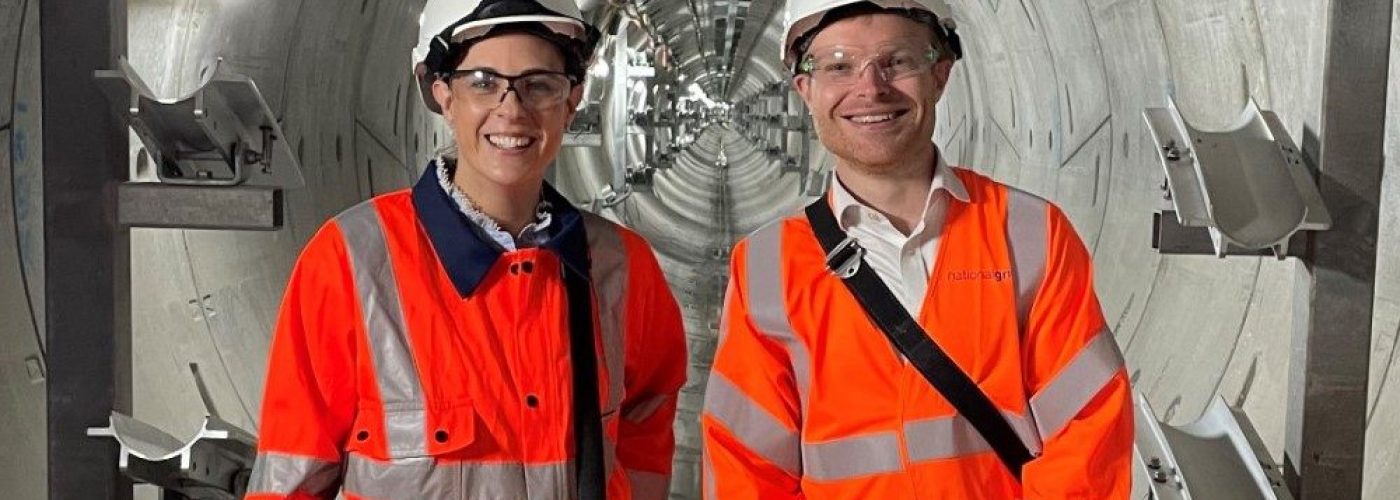National Grid has achieved a significant milestone in its £1 billion London Power Tunnels 2 (LPT2) project, with the successful energisation of the first 2.5km circuit between Hurst substation and Crayford. This milestone marks the initial step in a broader effort to reinforce the capital’s electricity network, ensuring it meets the demands of the future.
The LPT2 project involves the construction of 32.5km of new tunnels beneath London, stretching from Wimbledon to Crayford, to house a new high-voltage 275kV network. These 3m-diameter tunnels were bored by the Hochtief-Murphy Joint Venture (HMJV) between 2020 and 2023, with cables supplied by Taihan and installed by Balfour Beatty. The first circuit now sits 35m below ground, although the tunnels reach depths of up to 50m at certain points.
The previous infrastructure between Hurst and Crayford was installed in 1967 and had served London reliably for decades, but the ageing cables were nearing the end of their operational life. These older cables were buried in shallow trenches, making them more susceptible to damage and harder to maintain. In contrast, the new LPT2 tunnels are equipped with vertical shafts between 9m and 15m wide, reaching depths of up to 55m. These shafts, located at key points along the tunnel route and covered by headhouses, provide ventilation and safe access for maintenance, reducing disruption and enhancing safety.

In addition to the newly energised circuit, the LPT2 project includes two other double circuits: a 12km route between Wimbledon substation and New Cross, and an 18km route between New Cross and Hurst. A new substation at Bengeworth Road is also under construction, which will be the UK’s first to utilise SF6-free gas-insulated switchgear technology, marking a significant advancement in reducing the environmental impact of electrical infrastructure.
Energy Minister Michael Shanks attended the energisation event, praising the project as a shining example of British engineering excellence. “The London Power Tunnels demonstrate British infrastructure at its best,” Shanks stated. “This project is not only about securing the future of London’s electricity supply but also about driving the UK’s ambition to become a clean energy superpower. The engineering feats achieved here will help create skilled jobs and revitalise communities across the UK.”
Alice Delahunty, President of National Grid Electricity Transmission, highlighted the importance of this milestone. “The energisation of the Hurst-Crayford circuit is a tremendous achievement for our teams and supply chain partners,” she said. “Building over 30km of tunnels under London has been an extraordinary engineering challenge, and this progress is a testament to everyone involved.”
Raj Kundan, HMJV Project Director, reflected on the collaborative efforts that brought the project to this point. “Energising the first circuit from Hurst to Crayford marks a major milestone for the Project 13 Enterprise,” Kundan noted. “Our ‘One Team, One Spirit’ approach has been crucial in overcoming the complex challenges posed by this project. We look forward to continuing this successful collaboration on the remaining circuits.”
The current LPT2 project is the second phase of a larger initiative to bolster London’s electricity network. It follows the completion in 2018 of the first phase, a £1 billion, seven-year project that saw the construction of 32km of tunnels and two new substations in North London. Together, these efforts are laying the groundwork for a more resilient and future-ready electricity network for the capital.
Building, Design & Construction Magazine | The Choice of Industry Professionals





